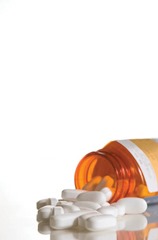The pharma price gap
 Peter Cheney considers why Irish citizens pay some of Europe’s highest price differences for regular medicines and the potential for cutting the cost.
Peter Cheney considers why Irish citizens pay some of Europe’s highest price differences for regular medicines and the potential for cutting the cost.
The massive difference in pharmaceutical prices between the UK and Ireland is leading to renewed pressure on the Government to close the gap.
A Sunday Business Post investigation into pricing in 2011 found a 12-fold difference between the HSE and NHS and led to a pledge by then Health Minister James Reilly to take action.
The subsequent Health (Pricing and Supply of Medical Goods) Act became law in May 2013, enabling more substitutions of generic medicines, but large differentials remain and these increase when larger dosages are ordered. The price differential is lower for the 250 commonly used products but the UK-based Office of Health Economics has found the following trend in that group in recent years:
| Year | UK average price (as % Irish average) |
| 2008 | 81 |
| 2009 | 69 |
| 2010 | 75 |
| 2011 | 81 |
Due to the border, some medicines will be sold at starkly different prices in pharmacies that are only a few miles apart. Around €2.5 billion per annum is spent annually on regularly prescribed medicines within the State, of which €2 billion is covered by the Health Service Executive. The total bill is higher as it includes specialist drugs used to treat seriously ill patients in hospital.
As the UK’s health budget is ten times higher than Ireland’s, the NHS offers a much larger market for pharmaceutical companies and is able to achieve some of the least expensive drug costs in the OECD group of countries.
The most recent figures – for 2012 or the nearest available year – indicate that Ireland has the sixth highest pharmaceutical spend out of 33 OECD member states: $666 per capita. The USA led the table ($1,010) and the four other countries with higher figures than Ireland were Germany, Japan, Belgium and Canada: $668-771 per capita. The UK’s position was twenty-sixth at $367.
Prices have been rising since 2000 due, in part, to the terms of voluntary agreements negotiated between the State, the pharmaceutical industry and pharmacists’ representatives. The Irish Pharmaceutical Healthcare Association (IPHA) describes this approach as a “constructive partnership” and maintains that an adequate price is needed to cover the costs of research and production. The agreements, though, only adjust prices every two years – as opposed to annually or every six months in other countries – and they also traditionally barred pharmacists from substituting generics.
Current and previous governments have acted to control the increase. The benchmarking of ex-factory prices, incurred by wholesalers and pharmacists, against EU member states with lower prices (including the UK and Spain) has halved wholesale mark-up prices and also reduced retail and pharmacy mark-ups. This benchmarking exercise means that the cost difference is found in the manufacturing element of the price. The falling price of generic drugs has helped in this regard although UK prices have fallen more rapidly.
The IPHA maintains that pharmaceutical price reductions have saved the State €800 million since 2006. That said, the overall budget has increased year-on-year – a trend noted by the EU and IMF which pressed the Government to take more action.
Last year’s ESRI study on pharmaceutical costs was commissioned after the EU went public with its criticism. It recognised that – under the new Act – the HSE had more discretion over price-setting but the lack of detail on how these would be set meant that reductions were far from guaranteed. The ESRI team (Aoife Brick, Paul Gorecki and Anne Nolan) concluded that price transparency at retail level was important and pharmacists needed to be able and incentivised to provide that information. The current pharmaceutical agreements will also be renegotiated in 2015.
The HSE is normally prepared to reimburse a product up to a cost threshold of €45,000 per quality-adjusted year.
Brick, Gorecki and Nolan have pointed out that this is sometimes exceeded and have therefore suggested a “national conversation” on whether this value is correct and the circumstances in which more expensive drugs should be purchased.
As mentioned, the difference is starkest in border counties but their residents can also easily cross into Northern Ireland to take advantage of lower prices. That option is simply not available to patients in Mayo, Clare, Cork and Kerry.
Furthermore, the residents of the west of Ireland have among the lowest incomes as well as the highest pharmaceutical costs in these islands. People living in West London – and benefitting from the NHS arrangements – tend to have the richest earnings and can buy the cheapest medicines.
The sector’s economic scale is clear with nine of the world’s top 10 pharma companies located in Ireland and 25,000 people employed. Ministers and industry figures have strongly rejected the claim that high pharmaceutical costs are an effective government subsidy to protect inward investment. They contend that our STEM skills and low corporation tax rate would attract pharmaceuticals in any case.
“As he has admitted himself, Minister Varadkar faces many challenges as he takes the helm at the Department of Health,” IPHA President Francis Lynch commented after the Cabinet reshuffle. “Operating within budget parameters will obviously be one of his priorities. The IPHA very much looks forward to working with the new Minister and his team to ensure the partnership approach to the delivery of medicines in Ireland is sustained.” This approach, he claimed, is “key to ensuring value for money” and would help patients to “continue to benefit from the most innovative and cutting edge medicines over the years to come.”






